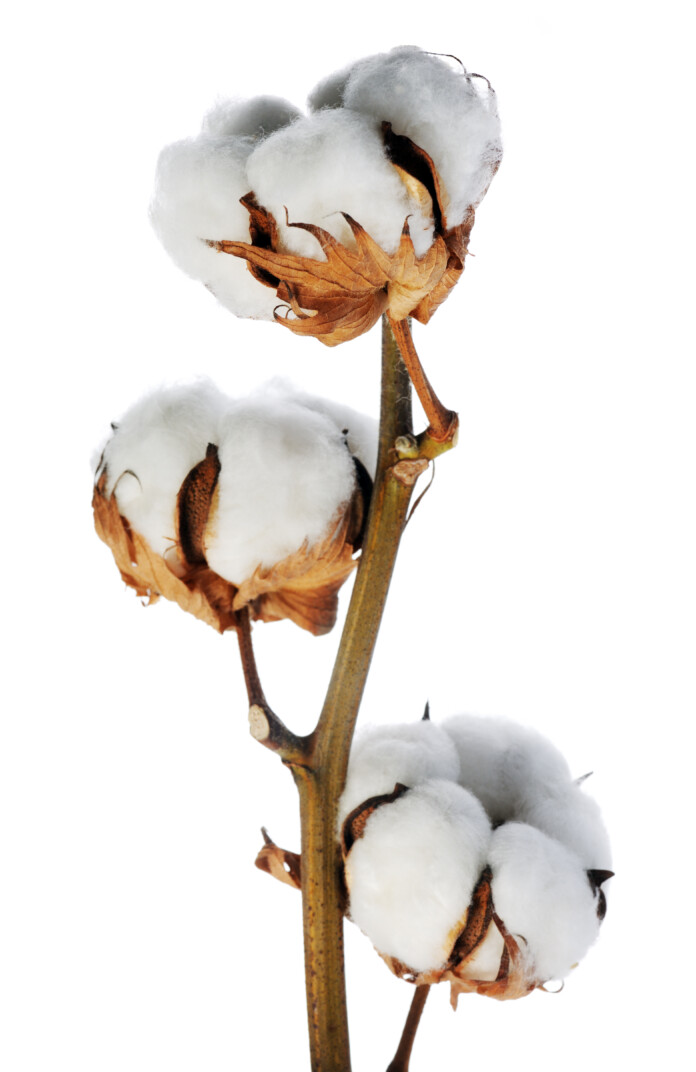
Cotton, among the five “Cs” of Arizona’s economy (copper, cattle, cotton, citrus and climate), has a long history in central Arizona, especially Pinal County.
Cotton seed from Meso-America arrived in southern Arizona over 1,500 years ago.
The ancient peoples, who lived along the Gila River from Florence to Gila Bend and along the Salt River in Phoenix, maintained the most extensive prehistoric water-control system in North America, capable of irrigating large fields of thirsty cotton. Over time, and selection, they developed a variety known as aboriginal Sacaton cotton.
Today, Pinal County continues to be an important cotton research and production area.
Cotton was independently domesticated in the New and Old Worlds. New-world cotton seeds found in Peru and Meso-America are 5,000 to 6,000 years old. Old-world cotton is only a little younger, the oldest varieties found in the Indus Valley and the Sudan. The hybridization of these species would provide us with the cotton in our blue jeans today.
At about 500 to 600 A.D., large communities in southern Arizona began cultivating cotton.
For nearly a thousand years, these ancient communities in Coolidge, Florence, Sacaton, Maricopa, Gila Bend and the metropolitan area of Phoenix were centers of culture and trade. Two large communities, one east of Maricopa and another at Casa Grande Ruins, grew an abundance of cotton.
Flood irrigation and the long growing seasons were ideal for cotton production. These ancient farmers had the corner of the market for the preferred prehistoric fiber for weaving. Over time, they would grow an abundance of cotton, produce beautiful, sometimes lacy, textiles and trade cotton throughout the Southwest.
Sometime around the mid-15th century, most of these large communities, like the one at Casa Grande Ruins, depopulated. Many people moved away. Communities in southern Arizona became smaller, yet cotton cultivation remained.
Early Spanish accounts of visits to Sacaton mention the surplus of cotton and the quality of cotton textiles. Father Kino, a Jesuit priest who visited the area in the late 1600s, mentions the Pima (Pima is a Spanish name for the Akimel O’odham, “people of the river”) would request the assistance of the Papago (Tohono O’odham, “people of the desert”) to assist in large cotton harvests. By the 1900s, due to upstream diversion of the Gila River in Florence, the Akimel O’odham no longer could farm cotton on a commercial scale because there was insufficient water. Despite this, the centuries-old skills of cotton farming were not forgotten.
In 1907, USDA established an experimental farm in Yuma and one in Sacaton to develop a high-yield commercial variety of cotton. Seed derived from recent hybrids in Egypt were planted in Yuma. A high-yielding plant was selected from the Yuma fields to be grown in Sacaton. This variety, characterized by light color and long fibers, would be named “Pima Cotton,” in honor of O’odham farmers.
The experimental farm in Sacaton would continue to research cotton production for another 50 years. In 1983, the research facility would be moved to the Maricopa Agricultural Center, the MAC, where the tradition of cotton research continues.
Alycia Hayes is a University of Arizona Master Gardener volunteer.
This content was first published in the November edition of InMaricopa magazine.

![MHS G.O.A.T. a ‘rookie sleeper’ in NFL draft Arizona Wildcats wide receiver Jacob Cowing speaks to the press after a practice Aug. 11, 2023. [Bryan Mordt]](https://www.inmaricopa.com/wp-content/uploads/2024/04/cowing-overlay-3-218x150.png)




![Maricopa’s ‘TikTok Rizz Party,’ explained One of several flyers for a "TikTok rizz party" is taped to a door in the Maricopa Business Center along Honeycutt Road on April 23, 2024. [Monica D. Spencer]](https://www.inmaricopa.com/wp-content/uploads/2024/04/spencer-042324-tiktok-rizz-party-flyer-web-218x150.jpg)





![Alleged car thief released without charges Phoenix police stop a stolen vehicle on April 20, 2024. [Facebook]](https://www.inmaricopa.com/wp-content/uploads/2024/04/IMG_5040-218x150.jpg)

![MHS G.O.A.T. a ‘rookie sleeper’ in NFL draft Arizona Wildcats wide receiver Jacob Cowing speaks to the press after a practice Aug. 11, 2023. [Bryan Mordt]](https://www.inmaricopa.com/wp-content/uploads/2024/04/cowing-overlay-3-100x70.png)


